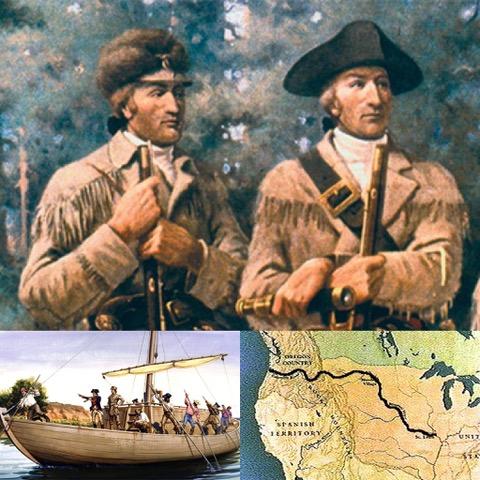
22 May “UNDAUNTED COURAGE:” LEWIS AND CLARK’S “TEAMWORK, TONE, TENACITY”
In May 1804, Lewis and Clark’s 30+ member “Corps of Discovery” left from St. Louis on a 2.5 yr journey as the first American expedition to explore our new northwest (and beyond) acquired in the Louisiana Purchase. Their objective was to map the territory, find a Northwest Passage to the Pacific and establish an American presence in unsettled territories before other powers tried to claim it. The secondary objectives were scientific and economic: study the flora, fauna, geography and establish trade with Native American tribes. Their remarkable journals document motivational TEAMWORK by a diverse group who encountered extraordinary challenges, upbeat TONE during prolonged periods of deprivation and inspirational TENACITY in the face of adversity.
- Great teamwork starts with a clear understanding of what the team needs to accomplish. Lewis and Clark were given a clear charter by President Jefferson: Find a Northwest Passage to the Pacific Ocean, create maps, establish friendly relations with Indians and collect scientific information. Having a clearly defined purpose is the foundation upon which leaders build a strong team and Lewis and Clark reinforced this “main thing” at every key juncture of the expedition.
- Captain Lewis unsuccessfully sought a promotion for Lieutenant Clark prior to beginning their expedition. Even when it wasn’t granted, Lewis always referred to Clark him as his “Co-Captain,” eschewing formal hierarchy to recognize another’s knowledge, authority and to share credit in front of the organization.
- Lewis and Clark were “servant leaders” who put the safety of their unit and success of the mission before themselves. Only one member died during the expedition and that was from acute appendicitis just two months after departing St. Louis. That’s an amazing statistic given the dangers they faced along the way.
- The inclusive leaders brought in French-Canadian Trapper Toussaint Charbonneau and his Shoshone wife Sacajawea onto their team several months into their journey and always sought their local cultural knowledge. Lewis and Clark also valued the opinions of their Corps members and sought consensus whenever possible. By taking team votes at key decision points where everyone had a say – including Sacajawea the one African American member of the team – these great leaders demonstrated the value in collective wisdom and collaborative processes which created a healthy organizational culture.
- A leader’s positive outlook and demonstration of fair, ethical standards sets a team’s culture. The following excerpt from Lewis’ journal in 1805 speaks volumes about the Corps’ TONE: “At this moment every individual is in excellent spirits, zealously attached to the enterprise, and anxious to proceed. Not a whisper of discontent. All in unison act with the most perfect harmony. With such men I have everything to hope and but little to fear.”
- Established standards for ethical behavior and fair discipline to maintain unit morale are also part of a team’s culture. One year into their expedition, two members were expelled from the Corps and ordered to return to St. Louis after their repeated lack of adherence to norms of acceptable behavior jeopardized the rest of the team. By removing the two men who weren’t a good fit for their team’s culture, Lewis and Clark actually strengthened the team’s culture for everyone else.
- ”Tenacity is perseverance with a purpose … understanding that in order to achieve success one most overcome obstacles. Lewis and Clark certainly had those: unknown territory, antagonistic Indian tribes, severe weather (“in snow deeper than the trees were tall”), hunger, fatigue, traveling upstream vs. waterfalls with boats and canoes, medical emergencies and hostile animals to name a few. All were overcome. In typically low key fashion, an oft used phrase in Lewis and Clarks’ journals summarized their TENACITY no matter the hardship, “We proceeded on.”

Sorry, the comment form is closed at this time.